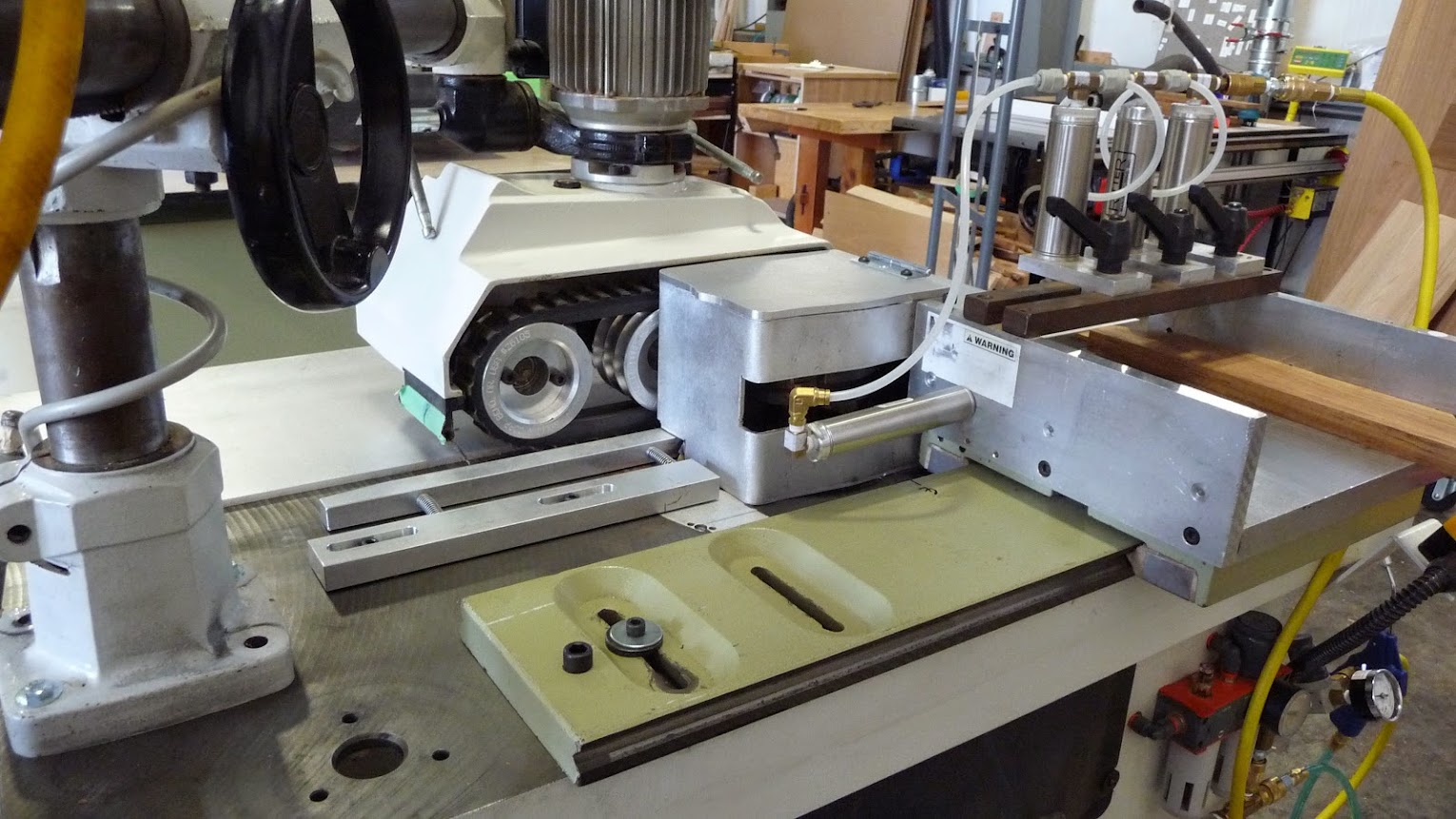Hi, I'm thinking to upgrade my coping and tenoning setup. Has anyone used this setup?:
http://tfzje.zqejf.servertrust.com/P...e=SOCOMEC-CT90
A few questions:
How easy is it to install accurately? How big a piece could one expect to work with? Would it work for entry doors?
I'd like a sliding table shaper but haven't found one in my price range. I'd use the add-on sliding table for cabinet doors coping on a 3hp delta and move it to an SCM 110 for bigger tenons on entry or interior doors.
I use a Weaver (manual) jig, which works pretty well but not quite as rigid and accurate as I'd like. For larger stock I use a homemade sled which rides along the fence which also works pretty well but is not foolproof.
Thanks for any insight,
David




 Reply With Quote
Reply With Quote



